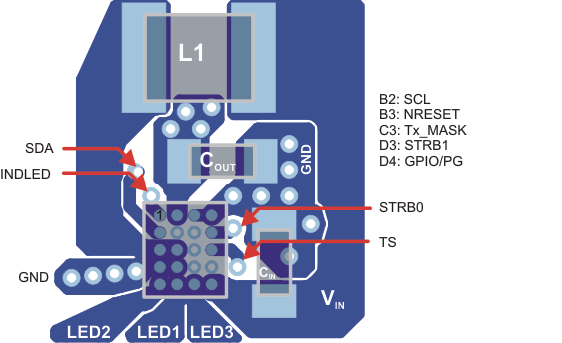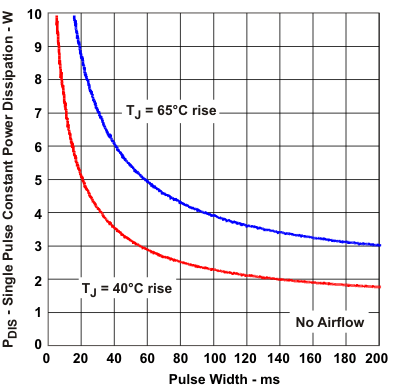SLVS978D March 2010 – September 2016 TPS61310 , TPS61311
PRODUCTION DATA.
- 1 Features
- 2 Applications
- 3 Description
- 4 Revision History
- 5 Device Comparison Table
- 6 Pin Configuration and Functions
- 7 Specifications
- 8 Parameter Measurement Information
-
9 Detailed Description
- 9.1 Overview
- 9.2 Functional Block Diagram
- 9.3
Feature Description
- 9.3.1 Privacy Indicator
- 9.3.2
Safe Operation and Protection Features
- 9.3.2.1 LED Temperature Monitoring (Finger-Burn Protection)
- 9.3.2.2 LED Failure Modes (Open and Short Detection) and Overvoltage Protection
- 9.3.2.3 LED Current Ramp-Up and Ramp-Down
- 9.3.2.4 Battery Voltage Droop Monitoring and Protection
- 9.3.2.5 Undervoltage Lockout
- 9.3.2.6 Hot Die Detection and Thermal Shutdown
- 9.3.2.7 Current Limit
- 9.3.2.8 Flash Blanking (Tx-Mask) for Instantaneous Flash Current Reduction
- 9.3.3 Start-Up Sequence
- 9.3.4 NRESET Input: Hardware Enable or Disable
- 9.3.5 Serial Interface Description
- 9.3.6 LED Forward Voltage Calibration
- 9.4 Device Functional Modes
- 9.5 Register Maps
- 10Application and Implementation
- 11Power Supply Recommendations
- 12Layout
- 13Device and Documentation Support
- 14Mechanical, Packaging, and Orderable Information
Package Options
Mechanical Data (Package|Pins)
- YFF|20
Thermal pad, mechanical data (Package|Pins)
Orderable Information
12 Layout
12.1 Layout Guidelines
As for all switching power supplies, the layout is an important step in the design, especially at high peak currents and high switching frequencies. If the layout is not carefully done, the regulator could show stability problems as well as EMI problems. Therefore, use wide and short traces for the main current path and for the power ground tracks.
The input capacitor, output capacitor, and the inductor must be placed as close as possible to the IC. Use a common ground node for power ground and a different one for control ground to minimize the effects of ground noise. Connect these ground nodes at any place close to one of the ground pins of the IC.
To lay out the control ground, TI recommends using short traces which are separated from the power ground traces. This avoids ground shift problems, which can occur due to superimposition of power ground current and control ground current.
12.2 Layout Example
 Figure 72. Suggested Layout (Top)
Figure 72. Suggested Layout (Top)
12.3 Thermal Considerations
Implementation of integrated circuits in low-profile and fine-pitch surface-mount packages typically requires special attention to power dissipation. Many system-dependant issues such as thermal coupling, airflow, added heat sinks and convection surfaces, and the presence of other heat generating components affect the power-dissipation limits of a given component.
There are three basic approaches for enhancing thermal performance:
- Improving the power dissipation capability of the PCB design
- Improving the thermal coupling of the component to the PCB
- Introducing airflow in the system
Junction-to-ambient thermal resistance is highly dependent on application and board layout. In applications where high maximum power dissipation exists, thermal dissipation issues in board design must be considered. The maximum junction temperature (TJ) of the TPS6131x is 150°C.
The maximum power dissipation is especially critical when the device operates in the linear down mode at high LED current. For single-pulse power thermal analysis, such as during a flash strobe, the allowable power dissipation for the device is given by Figure 73. These values are derived using the reference design.
 Figure 73. Single Pulse Power Capability
Figure 73. Single Pulse Power Capability